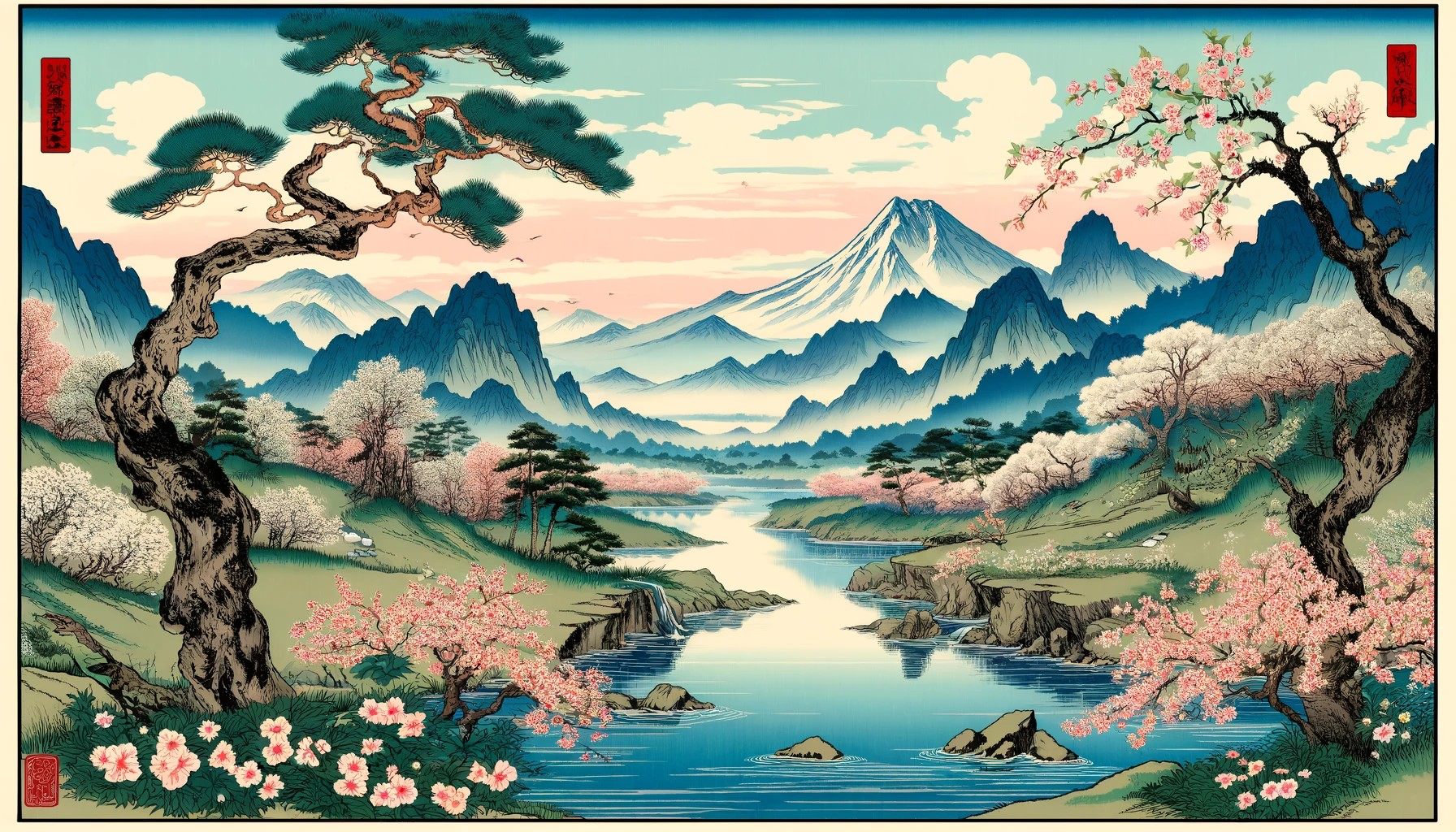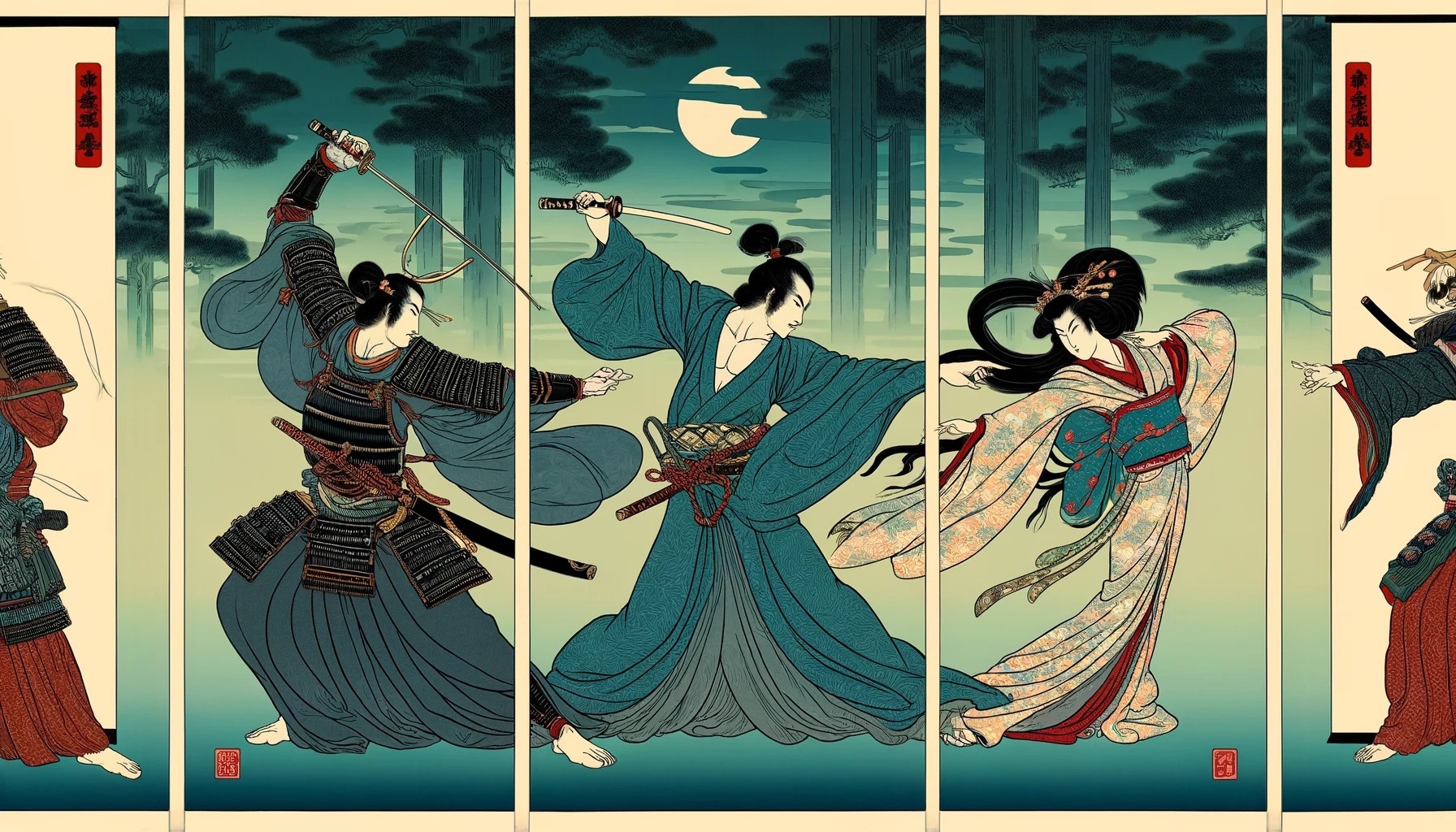Utagawa Hirosada (1810 ~ 1864)
Utagawa Hirosada, also known as Konishi (小西), was one of the most important and prolific artists based ]
in Ōsaka (大阪) during the late Edo period (江戸時代). He is believed to have been a pupil of Kunimasu Utagawa (歌川国益).
In 1852, Hirosada visited Edo (江戸) with two other Ōsaka artists, Sadamasu (貞升) and Sadayoshi (貞芳), contributing landscapes
and insert designs to two collections by Kunisada. This collaboration may explain why Hirosada adopted the Utagawa (歌川) name.
His production of yakusha-e (役者絵), or "actor prints," is estimated to include about 800 pieces, mostly medium-sized (chūban, 中判)
full-body and close-up (ōkubie, 大首絵) prints. Hirosada is known for his exceptionally expressive and dramatic style in depicting
kabuki (歌舞伎) scenes and famous actors. His ability to convey the narratives of kabuki drama and the emotions of the actors was of
very high standards for his time.
Hirosada's works are found in numerous collections, including the Victoria & Albert Museum, the British Museum, and the Philadelphia
Museum of Art, underscoring the peak popularity of the yakusha-e genre during his career.
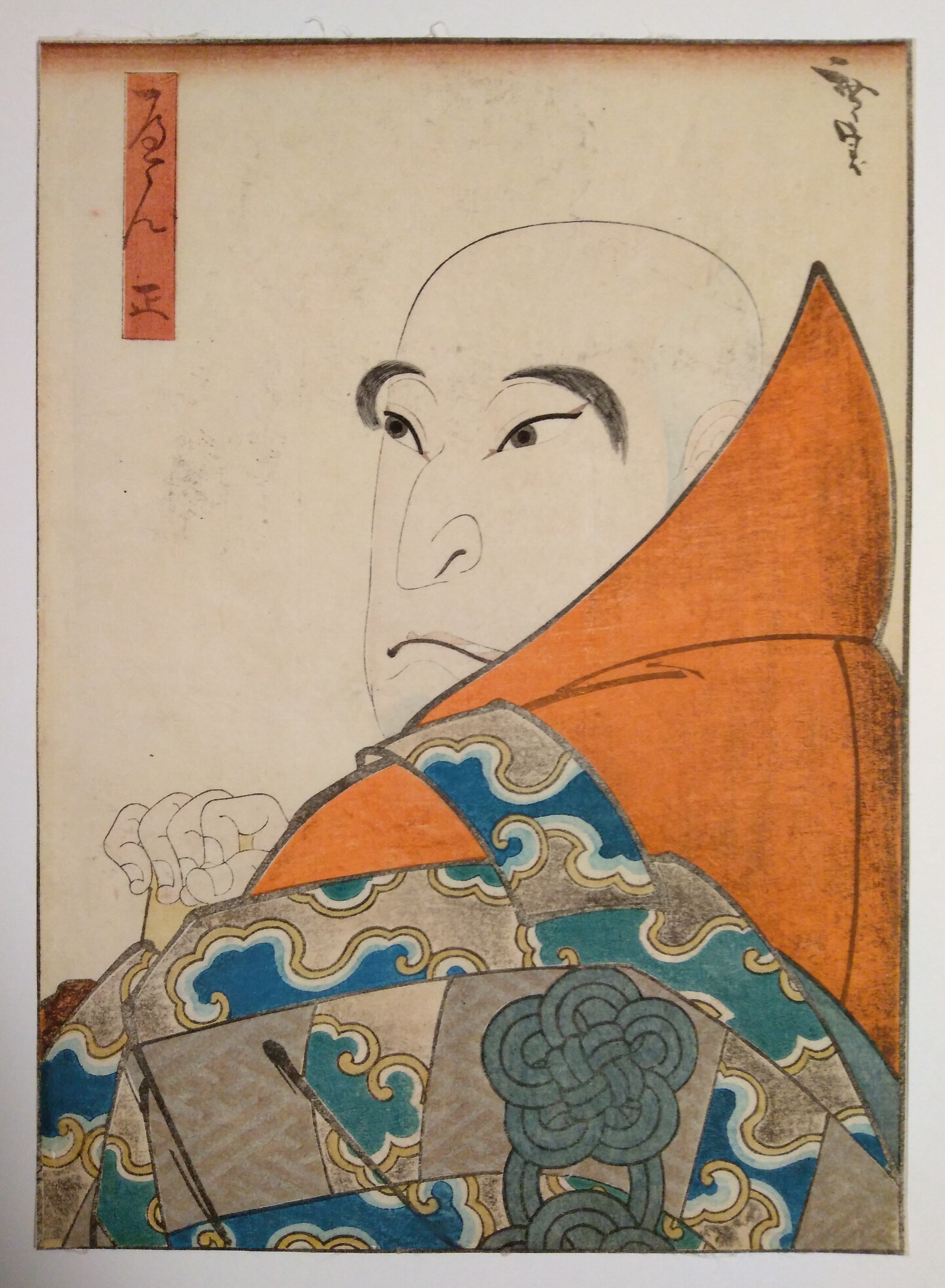
Henjō
Sold out
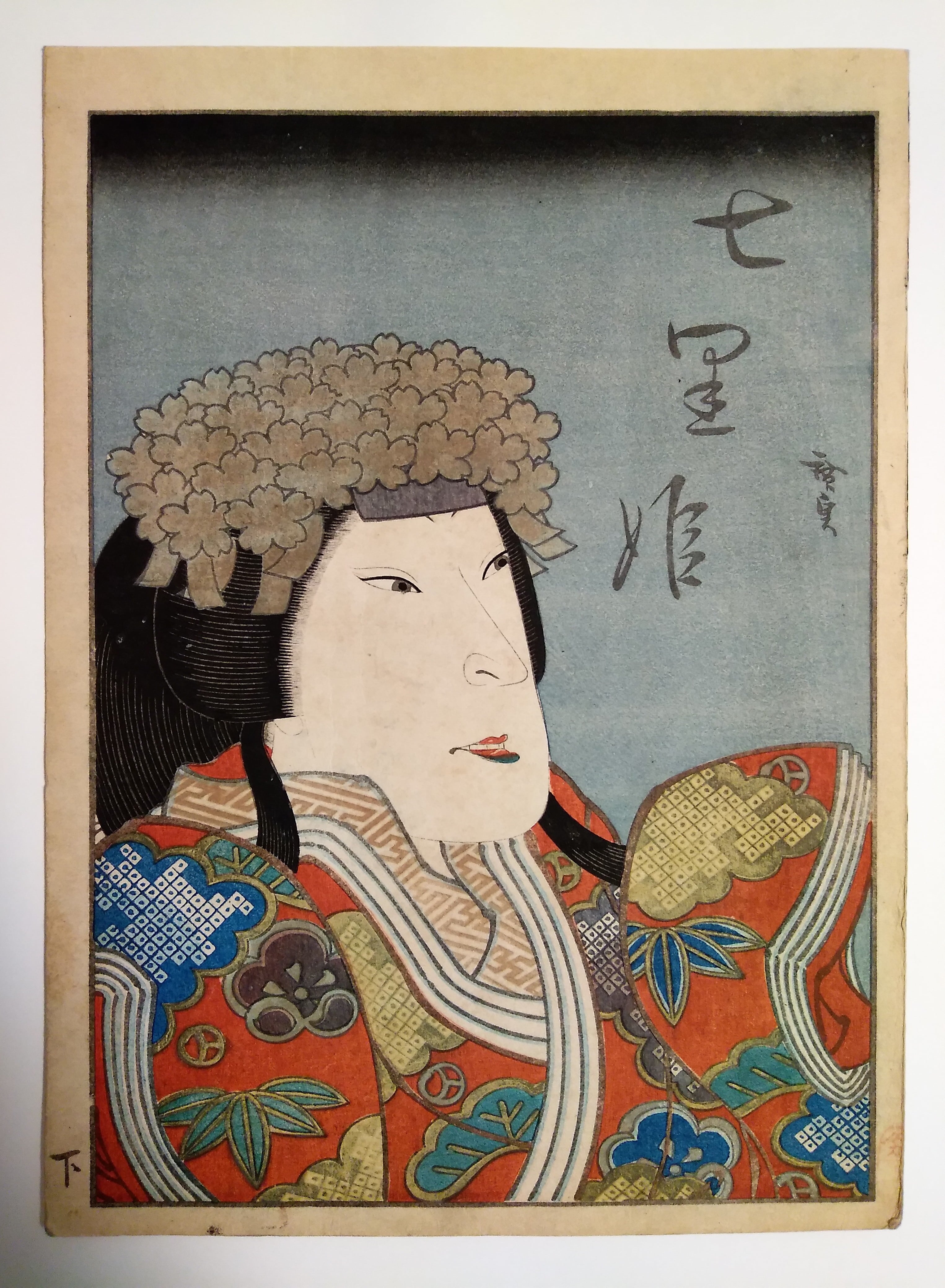
Nanazato Hime

Kataoka Gado
as
Yasuda Tomoharu
Sold out
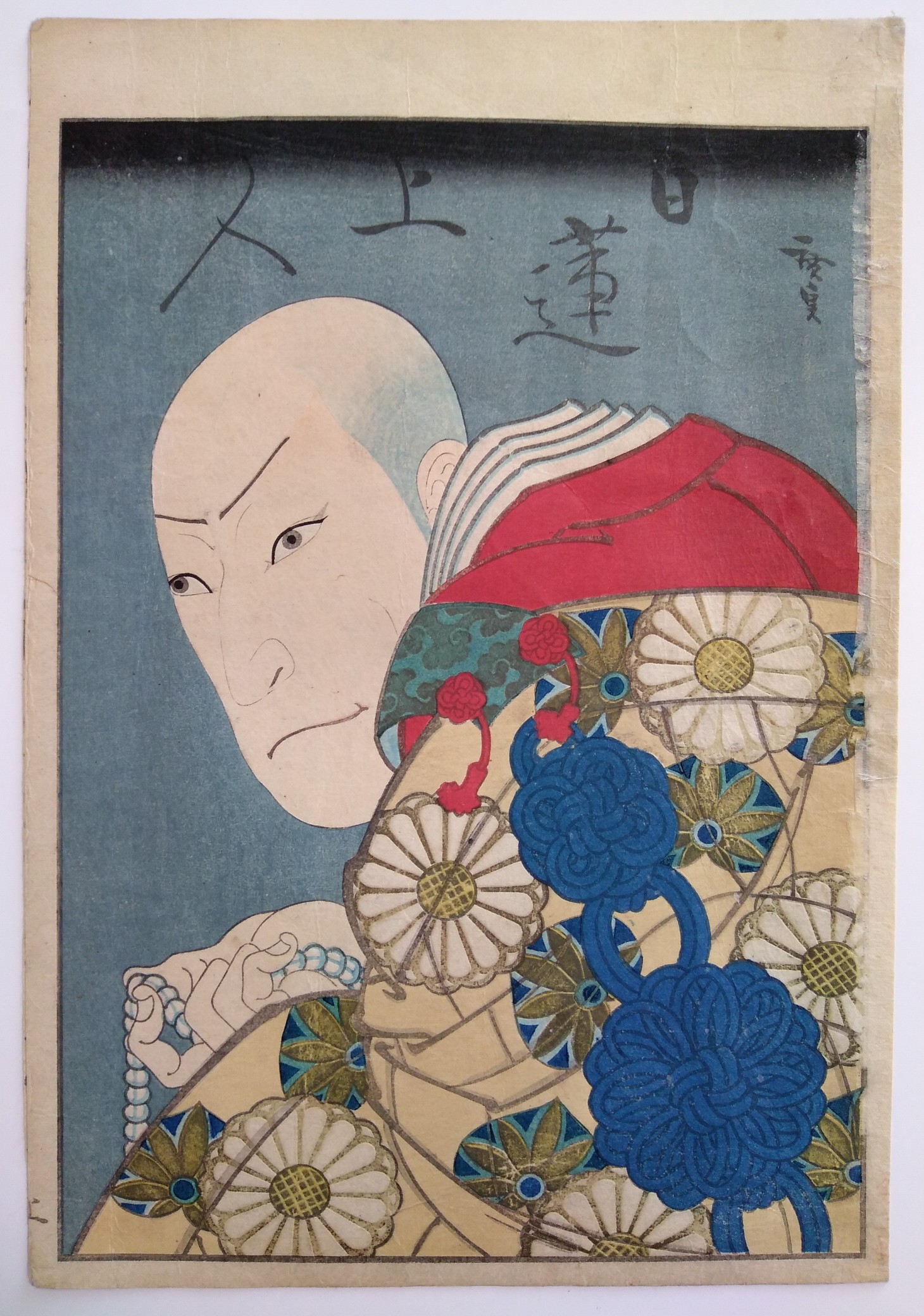
Nichiren Shōnin
